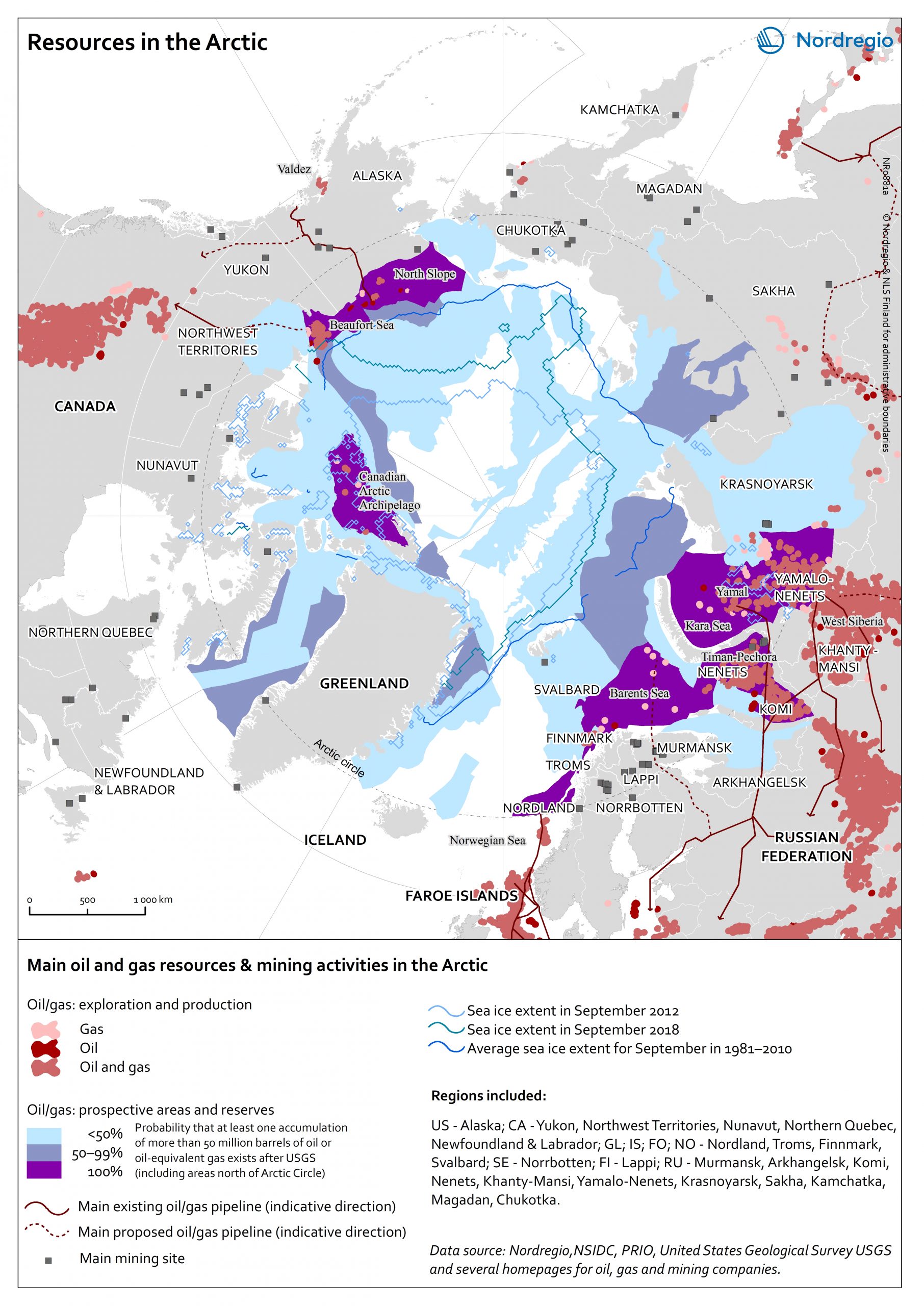This map shows both existing and potential sites of mineral and energy resources in the Arctic.
The map shows the main sites for gas and oil activities and mining resources in the Arctic. Exploration, development of production, and transport facilities for oil, gas, and mineral resources is increasing throughout the circumpolar region. Receding sea ice cover and permafrost thaw will influence accessibility to mineral and energy resources both on land and in the Continental Shelf in the future.
Location of petroleum fields
The main onshore and offshore oil and gas deposits in the Arctic are shown on this map. Information on the type of deposit and resource comes from several sources[1]. The main regions in the Arctic linked to oil and gas exploitation are the Beaufort Sea (North Slope, Alaska and Mackenzie Delta, Canada), and the northwest part of the Russian Arctic (Barents Sea and West-Siberia). Oil and gas are also found in the Canadian Arctic Archipelago (Nunavut). These three regions are also targeted for future exploitation. According to estimates from the US Geological Survey, the area north of the Arctic Circle is expected to store recoverable reserves of 90 billion barrels of oil, 1670 trillion cubic feet of natural gas, and 44 billion barrels of natural gas liquids (blue/purple areas on the map). These resources account for about 22% of the undiscovered, technically recoverable resources in the world. About 84% of the estimated resources are expected to occur offshore.
Location of mining sites
Several metallic and non-metallic minerals as well as and coal resources can be found in the Arctic. The exploitation of these resources is not a recent phenomenon, however due to technical development and decreasing permafrost and sea ice extends these resources are becoming more accessible. The largest metallic and non-metallic mineral and coal mines in the Arctic are shown as grey squares on the map. We used the Mineral Resources Data System by the USGS[2] and several other data sources to show balanced and up-to-date distribution of mining sites across the Arctic. The main areas for mining activities are the Fennoscandian shield with rich metallic and non-metallic mineral resources, as well as the Pechora coal basin in the Russian Federation.
Access to resources
The exploitation and development of the Arctic resources is dependent on the global supply and demand, global market prices, and political agreements. However, the future of Arctic resource extraction is also highly dependent on technical capacities and environmental challenges, which lead to higher extraction costs. Increased transportation, e.g. by tankers, will also require new capabilities to Search and Rescue capabilities as well as oil spill prevention. High economic costs of exploitation and transportation, and high demand for environmental protection are decisive factors for the exploitation of Arctic resources.
[1] Company homepages and national energy strategies

